The first record of the self-portrait dates back to the 1490s, according to James Hall, the author of Self Portrait: A Cultural History, and it was with the self-portrait that a distinctive veneration of the artist arguably began. Hall cites early examples such as Self Portrait With His Wife, c. 1490 by Israhel van Meckenem. Hall goes on to say that the self-portrait acted as a platform on which the “personal agendas of artists” could be furthered. Since the inception of the self-portrait, artists have found no shortage of ways to portray themselves—from illuminated manuscripts to sculpture and contemporary performance art. I’m interested however, in one very contemporary version of the self-portrait: the “selfie”.
Before we delve into the Selfie Queen herself—Kim Kardashian West—let’s take a moment to consider one of art history’s more recognizable female artists who specialized in the self-portrait: Frida Kahlo (1907–1954). Widely believed to be Mexico’s most famous female artist, Kahlo began painting self-portraits after a bus accident that made it impossible for her to practice medicine as she once wished. Her highly sought after and incredibly well-respected portraits are an expression of her identity as she, the artist, perceived it—one often in both physical and emotional pain.
“I am happy to be alive as long as I can paint,” she once wrote, and each one of her self-portraits is steeped in symbolism celebrating her life. Her adoption of the traditional Tehuana clothing of embroidered blouses, long skirts, and flower headdresses both hides the braces that cover her body and acts as a symbol of female authority. The repeated use of monkeys—symbols of fertility—in her paintings speak to the children she was never able to have due to her medical condition. Her depiction of herself with a barely there mustache and iconic unibrow serve to undermine centuries of conventional standards of feminine beauty. Despite never achieving the level of fame that has come to define her current status in art history, Kahlo was famous in her own lifetime. And while often her notoriety was tied directly to her being muralist Diego Rivera’s wife (even her New York Times obituary read: “Frida Kahlo, Artist, Diego Rivera’s Wife”) many of her later self-portraits were done on commission. She was a professional female artist.
Self-portraits are part of an important feminist tradition, one steeped in patriarchal norms of what it meant to be an artist and a woman. Up until (appallingly) recently being a practicing artist meant that somehow you had to break into an unwelcoming boys club. A club that required entry if you hoped to make any money at all as an artist. A club that did its damnedest to ensure that women would not benefit from the same opportunities and experiences that they enjoyed. Shunned from a formal artistic education, women were forced to cobble together an education without the funding or support that budding male artists received. Until about the eighteenth century, one of the only ways to become a professional artist was to be the daughter of one. Take Rosa Bonheur (1822–1899), daughter of Oscar-Raymond Bonheur, a landscape and portrait painter. Or Renaissance artist Artemisia Gentileschi (1593–1653), who learned to paint alongside her less-talented brothers in her father Orazio Gentileschi’s studio. Women were not allowed into life drawing classes where the all-important male nude was used as a model, as it was deemed “improper” for them to see naked men. Nor were they released from their maternal and marital responsibilities unless they shirked them all together, or had the good fortune of marrying a man supportive of their chosen profession.
Enter the female self-portrait. Fast forward a few hundred years, and self-portraits aren’t just oil paintings and photographs of stone-faced reflections in ornate mirrors (not that they ever truly were just this). Today, the definition of a self-portrait can be infuriatingly vague for those who seek to tidy up gray areas and assuredly know where we stand in relation to one another. I define a self-portrait as anything that is a self-conscious reflection of our desired identities made with the intention of sharing with an audience of our choosing—in short, everything from a Facebook profile, a selfie taken in the dressing room, to a sketch drawn of oneself while sitting in front of the bedroom mirror.
Consider a recent selfie by Kim Kardashian West. You may know Kardashian West as the husband of Kanye West, or as one of the pivotal members of the Kardashian empire. She, like Kahlo, can be considered a professional female artist. Where does the line between the self-portrait and the selfie fall? Both Kardashian West and Kahlo are masters of the form—suggesting that perhaps there is no clear line at all.
“Every woman who paints a self portrait, or sculpts a likeness, or places herself in front of a camera whose shutter she controls, challenges in some way the complex relationship that exists between masculine agency and female passivity in Western art history,” argues art historian Whitney Chadwick.1 And while Chadwick frames this statement in terms of the agency it provides the female artist, I would argue that self-portraits of all kinds by women achieve the same goal. And that they not only challenge the conception of “female passivity in Western art history,” but in culture at large.
Self-portraits are an expression of agency and independence.
“I hope that through this platform I have been given, I can encourage the same empowerment for women and girls all over the world,” writes Kardashian West about her influential Instagram account. But it doesn’t stop at visual representations. I would argue that the modern-day self-portrait extends to the written world as well. Tell-all autobiographies, blogs, and the quotes we rewrite in flowing typography and post on Instagram are undoubtedly a self-conscious reflection of our desired identities.
But what do these portraits accomplish? Today, instead of just helping us navigate the art world, self-portraits of all stripes have the potential to help us navigate our own takes on feminism, body image, sexuality, our relationship with food, with our peers, with our lovers, with our jobs, and when it comes right down to it, with our selves.
Take a moment to quickly browse Kardashian West’s Instagram, something that eighty million followers already do on a daily basis. You will find a carefully curated collection of professional photographs, paparazzi snaps, product endorsements, and selfies of her with her sisters, her children, her husband, and often all by herself in all of her big-bootied glory.
In May 2015 Kardashian West published Selfish, a coffee table book with over three hundred selfies. According to the artist, the project started out as a collection of steamy Polaroids that her assistant, Stephanie, helped her take as a Valentine’s Day gift for her husband. Sensing the possibility of a larger, more involved collection of her much sought-after selfies, Kardashian West partnered with Rizzoli Publications to bring the project to fruition. Despite initial accounts that Selfish only sold 32,000 copies, Pam Sommers, Rizzoli’s Executive Director of Publicity, states that the actual figure is closer to 125,000. Selfish is now in its fourth printing, now boasting an American printer making it possible to respond to the demand more quickly.
Other than her self-portraits, Frida Kahlo is probably most recognizable from the photographic collections by her longtime friend and lover, Nickolas Muray. She was, after all, his most photographed subject. Aside from her own selfies, Kardashian West is probably best known to us from her paparazzi photographs. Both artists are caught in the moment, in everyday activities, the images widely disseminated and forming the public conception of their identity. Both women use their respective media to clarify and control their identity as artists, complementing portraits distributed by others.
Whether Kardashian West considers herself to be an artist is a moot point. Regardless of how she views her empire of images, she creatively exploits art historical tropes and profits from their use. Not everyone agrees, of course, that her identity is either artistic or even intentional. After all, they will remind you, this is the woman who rose to fame on equal parts home made sex tape and Paris Hilton. There are those like Courtney Shea who call her book Selfish “…ridiculous and grotesque, to be sure, but maybe also a little brilliant by mistake.” I can assure you, nothing Kardashian West does is a mistake.
Much like her book of selfies, Kardashian West’s Instagram account is a carefully crafted expression of her identity—one that invites a personal involvement in her life as a mother, a wife, a sister, a businessperson, an advocate for human rights, a woman, and lover. In her own words: “I am a mother. I am a wife, a sister, a daughter, an entrepreneur, and I am allowed to be sexy.” Kardashian West’s entire online presence is a strategic perpetuation of her identity, and her assistant Stephanie is much like the artist’s assistant there to capture, catalog, and preserve the minutiae of the artist’s daily life. Every single product endorsement, outfit choice, and sister selfie posted to Kardashian West’s Instagram serves a purpose. Whether that purpose is to promote sales of her book, increase viewership of her hit reality show, or support her husband’s successful musical career, every post is a deliberate, curated addition to her oeuvre.
The claim that Kardashian West is an “artist” has already been made by authors such as Laura Jean Moore for VICE; her 2015 article “Kim Kardashian West Is The Outsider Artist America Deserves” outlines the ways that Kardashian West has pursued a traditionally male genre, the self-portrait (aka the selfie), to break free from gendered stereotypes of what it means to be a woman—essentially beating them at their own game. While Moore believes that America itself is well-suited for Kardashian West’s creative reception, I would argue that she is especially improving the landscape for women artists and entrepreneurial creatives for those to follow.
The unmistakably sexy selfies of Kardashian West displaying her post-baby body speak to our society’s obsession with shedding the “baby weight.” Her selfies taken in front of the mirror while she wears her waist trainers are not just product endorsements for which she makes thousands of dollars (much like Frida Kahlo’s later commissions of her self-portraits), but also an expression of the lengths to which many of us go for the perfect, hourglass figure. Not to mention the societal pressure to obtain this body after childbirth. Her selfies taken with North, her outgoing daughter, are snapshots into her identity as a fun, down-to-earth mother, who despite the 35-carat diamond ring on her finger changes diapers along with the rest of us.
And it’s not just women either who are harnessing the self-portrait and everything it stands for in today’s online society. A growing community of men who also use Instagram as their main platform are expanding societal norms on what gender in 2016 can mean. It is people like Angel Merino that have me waiting with bated breath for Maybelline’s first commercial featuring a male makeup model. (Of course they will have to change their slogan from “Maybe she’s born with it”.)
Instagram is an accessible platform on two levels: it makes displaying our own conceptions and ideals of our identities possible, even easy. However, it also opens the floodgates for reaction, judgment, and often hostility from the masses. Kardashian West acknowledges the likelihood that with every photo she publishes to Instagram, there exists someone on the Internet who is waiting in the wings with words of criticism—and there will always be that one person with time on their hands to compile the “Top 10 Most Disrespectful Comments Left on Kim Kardashian’s Instagram.”
Similarly, “Kahlo created a personalized image that serves as a contemporary feminine ideal—both tender and fierce,” writes Hank Hine, the curator of Kahlo’s first solo exhibition in Florida this year. Not only does Kardashian West’s Instagram account have an impact on the direction of art and culture, but it also reaffirms the importance of artistic innovation and identity. Studies have shown that the making and sharing of self-portraits (read: selfies) on social media have the potential to increase self-esteem. Outlining the psychology of the selfie, one study reports that “65% [of women ] said seeing their selfies on social media boosts their confidence, and 40% of all teens said social media helps ‘me present my best face to the world.’” At young and dangerously impressionable ages, increasing confidence and promoting the expression of agency and independence are vital.
Not everyone agrees, of course, that selfies have the potential to benefit self-esteem. According to a study commissioned by the Dove Self Esteem Project, young women in the United States spend one hour and twenty four minutes a week preparing for selfies, and an indeterminate (yet undoubtedly longer amount of time) afterwards editing. The concern outlined by the study is that the young women posting these images are placing too much importance on the reactions of their followers, and that a negative comment might be more harmful than a dozen positive remarks. While compelling, the study does not credit the ability to express identity in a highly individualized way as the hugely beneficial act that it is.
By conflating the self-portrait and the selfie into the same art historical category there is the potential to continue and enrich the conversation about art, consumerism, identity, pop culture, and gender. The same conversation that artists such as Cindy Sherman, Tracey Emin, and Barbara Kruger have already thoroughly launched. “Their bodies [The Kardashian’s] are their inventions, trademarks and commodities,” says Hannah Betts, writing for the Telegraph. A fitting final example is Barbara Kruger’s October 2010 cover for W Magazine’s Art Issue featuring a nude Kardashian West with Kruger’s iconic white on red text reading “It’s all about me / I mean you / I mean me” strategically overlaid on her enviable body. Kardashian West’s body (or a butt, rather) that has made an entire generation question conventional standards of beauty, much like Frida Kahlo’s unibrow and mustache.
While not a self-portrait, this image is not far off from Kardashian West’s oeuvre of bathroom mirror selfies featuring as much of her body as possible. Here her waxed, gleaming body looks almost Barbie-like in its perfection, while her hair is a whole other shampoo commercial. The blatantly satirical text suggests as much about Kardashian West’s personal and artistic outlook as it does the society that it grew out of. While many decried this image as the immediate downfall of contemporary art, let’s remember that there were also those outraged and fearful about Andy Warhol’s iconic soup cans. The same author who implied that Selfish is a happy mistake goes on to wonder if Kardashian West’s Instagram photos will become “accidental pop art.” While they are certainly far from accidental, their pop status seems apt, and their classification as art, well, undeniable.
***
1. Liz Rideal, Whitney Chadwick, and Frances Borzello , Mirror Mirror: Self-Portraits by Women Artists (New York, NY: Watson-Guptill, 2002), 8-21.↩
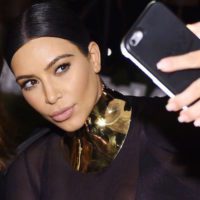
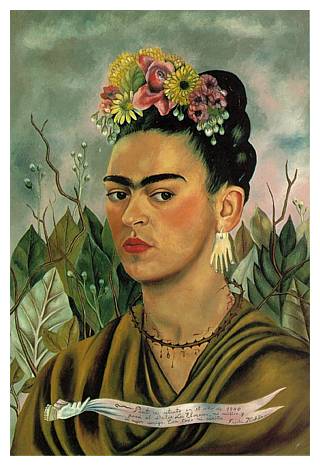
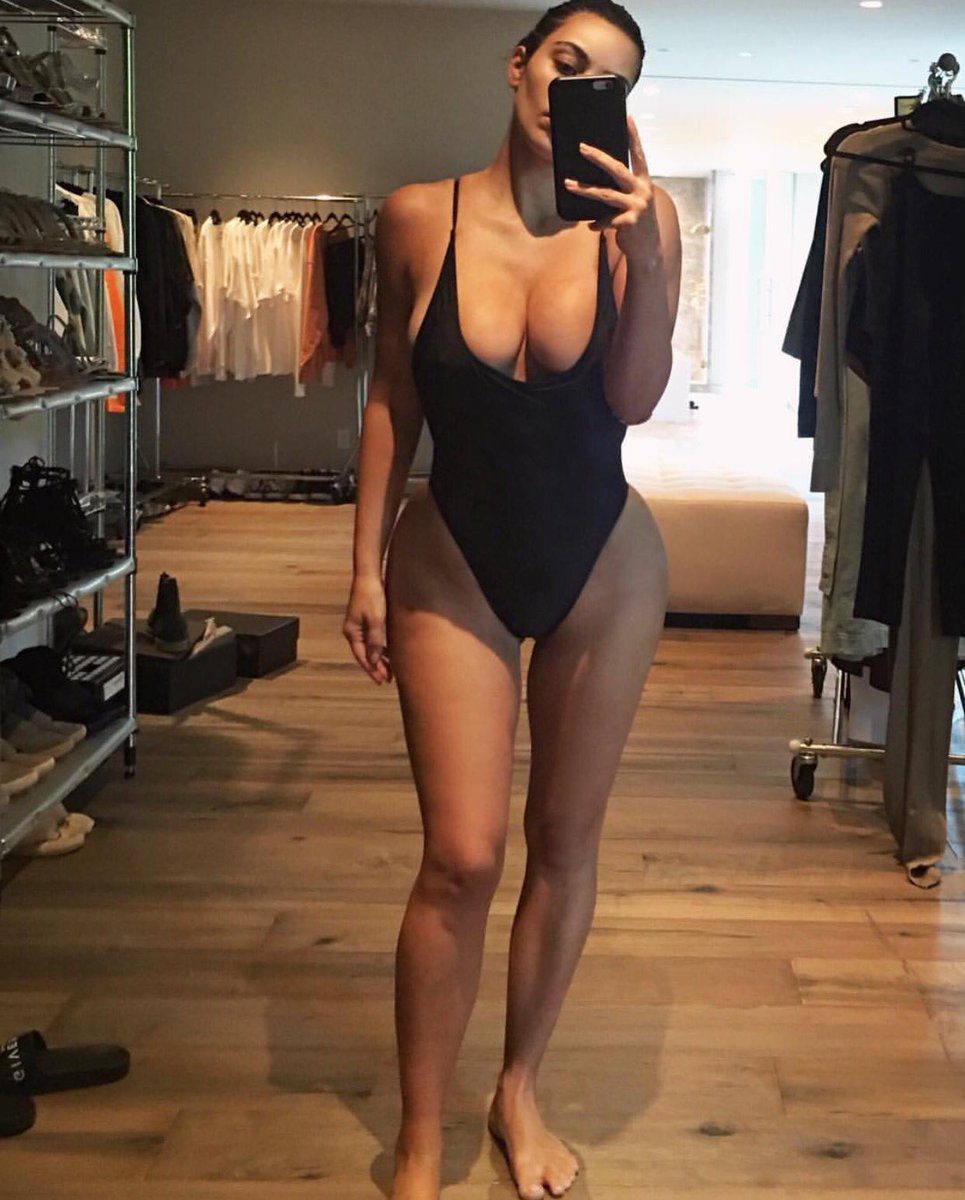
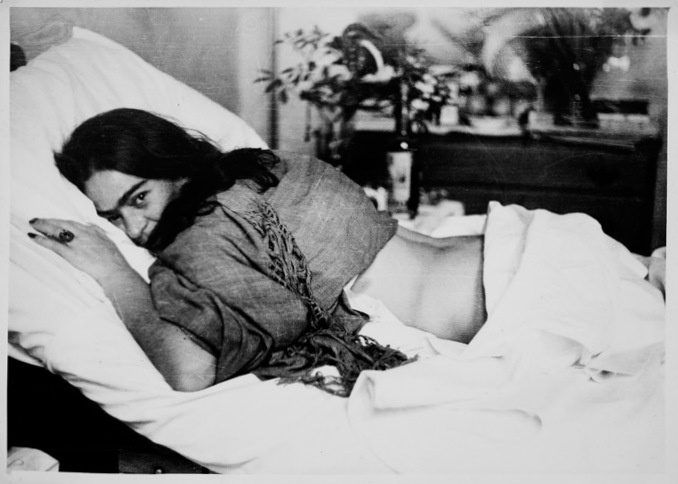
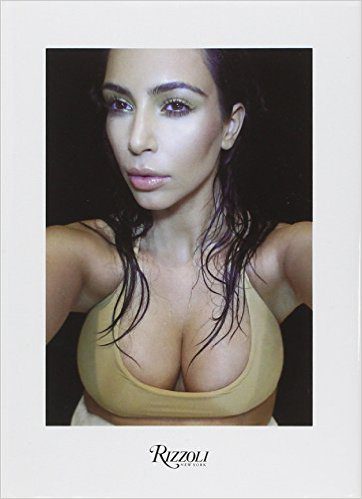
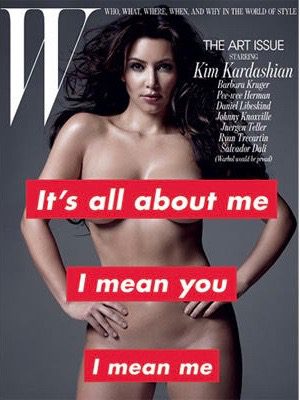




3 responses
Convergent evolution or reverse engineering?
http://www.vice.com/read/kim-kardashian-west-is-the-outsider-artist-america-deserves-848
We were just made aware of this issue and are looking into it right now. We certainly did not know about the VICE piece when we accepted this piece.
–Marisa
I love this article so much! A thoughtful, well-written comparison between two very interesting women artists.
Click here to subscribe today and leave your comment.